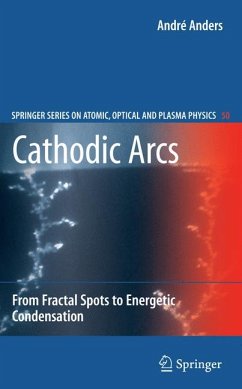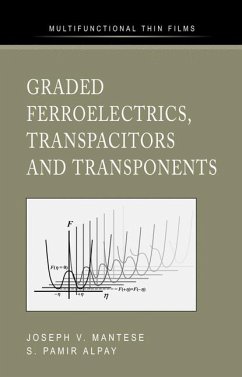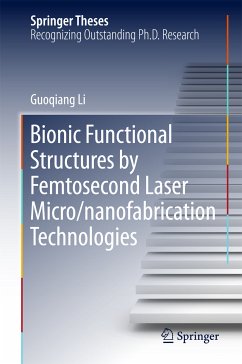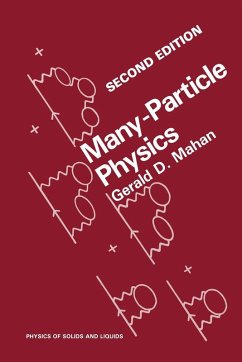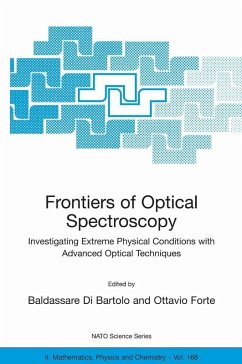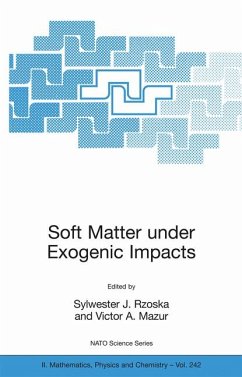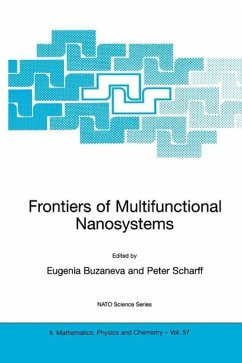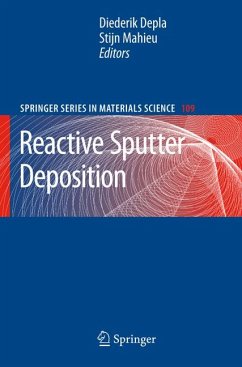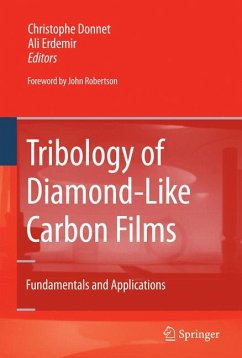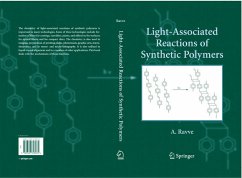
PAYBACK Punkte
88 °P sammeln!






t/c with MS
Dieser Download kann aus rechtlichen Gründen nur mit Rechnungsadresse in A, B, BG, CY, CZ, D, DK, EW, E, FIN, F, GR, HR, H, IRL, I, LT, L, LR, M, NL, PL, P, R, S, SLO, SK ausgeliefert werden.
André Anders is a Senior Scientist and the Leader of the Plasma Applications Group at Lawrence Berkeley National Laboratory in Berkeley, California. He published his first paper on discharges in vacuum in 1984 and has worked in related fields ever since, first with his mentors Burkhard Jüttner and Erhard Hantzsche in East Berlin, Germany, and since 1992 in Berkeley, California. With over 200 publications in refereed journals, he contributed to the field of cathodic arcs and arc-based coatings by extensive measurements of arc plasma properties and the development of miniaturized filtered arc systems for diamond-like carbon, which are today used by the magnetic storage industry. He currently serves in many committees, most notably as the Chairman of the Permanent International Scientific Committee of the Symposia on Electrical Insulation and Discharges in Vacuum.
Produktdetails
- Verlag: Springer US
- Seitenzahl: 544
- Erscheinungstermin: 30. Juli 2009
- Englisch
- ISBN-13: 9780387791081
- Artikelnr.: 37287035
With great interest I learned that the Springer Scientific Publisher has published a monograph entitled "Cathodic Arcs: From Fractal Spots to Energetic Condensation" by Dr. Anders, Leader of the Plasma Applications Group at Lawrence Berkeley National Laboratory, a scientist noted as an expert in physics of vacuum discharges and in discharge-assisted coating deposition technologies. Being closely acquainted with a great number of articles and reviews authored by him and co-authored with scientists from different countries who come to Berkeley to execute research work, I anticipated that such a book would just about to appear because the great body of data amassed by Dr. Anders strongly called for integration. My expectations have been
Mehr anzeigen
realized, and I would like to express my sincere congratulations to Dr. Anders on the occasion of the appearance of this book.
At first glance the book's title looks somewhat unusual because all of us, the scientists engaged in this field of physics, has got used to the term "vacuum arc", specifying the arc type by some additional words. It seems that the author uses the term "cathodic arc" to stress that we are dealing with a vacuum arc (or an arc in a low-pressure working gas) during which the working medium is supplied to the discharge gap only by cathode spots. The plasma flow produced from this conducting medium is transferred through a plasma-optical system, which eliminates macroparticles, and eventually it settles on a substrate to form a cathode material coating. I believe that there are all grounds to accept the term "cathodic arc" because it simplifies the description of the phenomenon by treating it as a sequence of events from the initiation of cathode spots and generation of cathode plasma to the settlement of cathode plasma ions on the substrate. This is exactly what the author has done by considering the whole sequence of events from both the physical and the technical viewpoint. This consideration ispreceded by a detailed more than two-century background of this problem.
In my opinion, the book is a contemporary encyclopedia in the physics, engineering, and technology of vacuum (cathodic) arcs and in their use for coating deposition to which the author has made a great contribution. The appearance of this book is an important step toward the advance in high current vacuum electronics and in its up-to-date technological applications. I should like to wish the author further advances in his research work.
Professor Dmitry I. Proskurovsky
Institute of High Current Electronics
Russian Academy of Sciences, Siberian Division
Tomsk, 634055, Russia
At first glance the book's title looks somewhat unusual because all of us, the scientists engaged in this field of physics, has got used to the term "vacuum arc", specifying the arc type by some additional words. It seems that the author uses the term "cathodic arc" to stress that we are dealing with a vacuum arc (or an arc in a low-pressure working gas) during which the working medium is supplied to the discharge gap only by cathode spots. The plasma flow produced from this conducting medium is transferred through a plasma-optical system, which eliminates macroparticles, and eventually it settles on a substrate to form a cathode material coating. I believe that there are all grounds to accept the term "cathodic arc" because it simplifies the description of the phenomenon by treating it as a sequence of events from the initiation of cathode spots and generation of cathode plasma to the settlement of cathode plasma ions on the substrate. This is exactly what the author has done by considering the whole sequence of events from both the physical and the technical viewpoint. This consideration ispreceded by a detailed more than two-century background of this problem.
In my opinion, the book is a contemporary encyclopedia in the physics, engineering, and technology of vacuum (cathodic) arcs and in their use for coating deposition to which the author has made a great contribution. The appearance of this book is an important step toward the advance in high current vacuum electronics and in its up-to-date technological applications. I should like to wish the author further advances in his research work.
Professor Dmitry I. Proskurovsky
Institute of High Current Electronics
Russian Academy of Sciences, Siberian Division
Tomsk, 634055, Russia
Schließen
Für dieses Produkt wurde noch keine Bewertung abgegeben. Wir würden uns sehr freuen, wenn du die erste Bewertung schreibst!
Eine Bewertung schreiben
Eine Bewertung schreiben
Andere Kunden interessierten sich für



